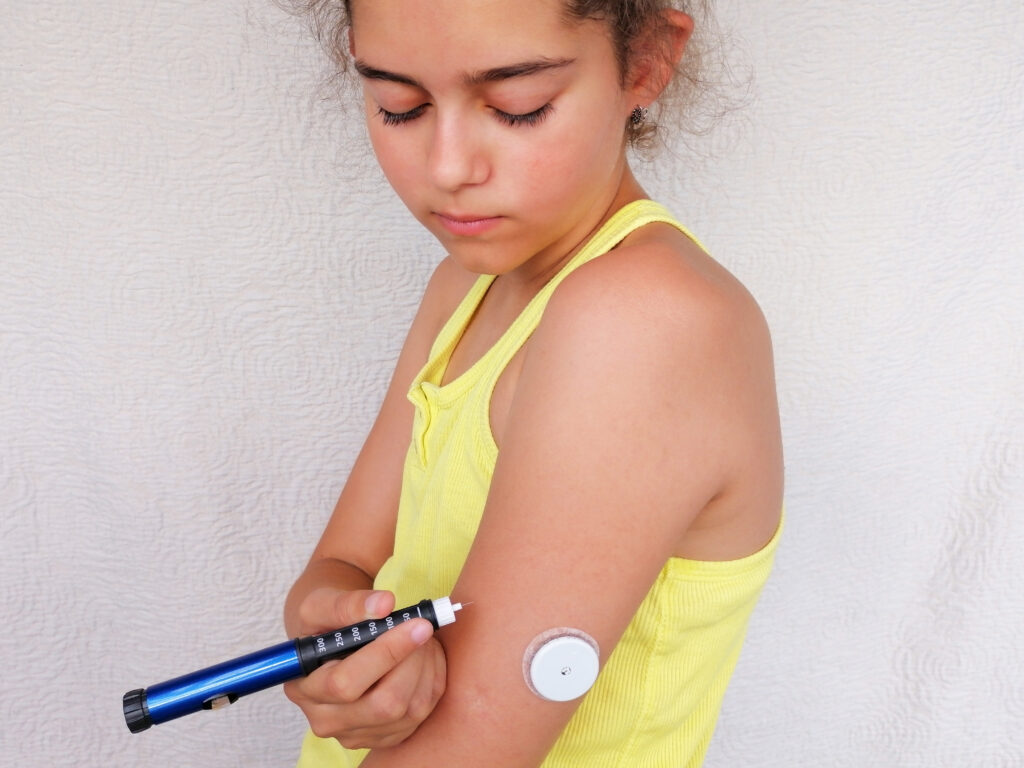Early closed-loop therapy fails to slow C-peptide decline in type 1 diabetes
By Eleanor McDermid, medwireNews Reporter
Starting young people on closed-loop insulin delivery within 21 days after type 1 diabetes diagnosis does not slow the decline in their beta-cell function over the next 12 months, report the CLOuD investigators.
For the trial, published in The New England Journal of Medicine, Roman Hovorka (University of Cambridge, UK) and study co-researchers measured the participants’ geometric mean of the C-peptide area under the curve during a mixed-meal tolerance test, as a surrogate of beta-cell function.
After 12 months, this was 0.35 pmol/mL in the 51 study participants randomly assigned to receive closed-loop insulin therapy, in which an algorithm developed at the University of Cambridge controlled the rate of basal insulin delivery from a pump, based on interstitial glucose levels measured by a continuous glucose monitor. Participants still needed to take an insulin bolus at mealtimes.
This C-peptide level was not significantly different from the 0.46 pmol/L measured in the 46 participants who received standard care with multiple daily injections.
The participants were aged 10.0 to 16.9 years (average 12.0 years, 44% female) and started their randomized treatment an average of 9.5 days after diagnosis. By month 12, 10% of the standard care participants had started on an insulin pump and 57% were using intermittently scanned or real-time continuous glucose monitoring.
Adolescents in the closed-loop group used the full system for an average 76% of the time, and continuous glucose monitoring for 81%, resulting in an average time in range (70–180 mg/dL; 3.9–10.0 mmol/L) after 12 months of 64%, which was significantly higher than the 54% achieved in the standard care group.
C-peptide declined in both groups during the trial period and continued to do so for the full 24 months of follow-up, with no significant differences between the two. Exogenous insulin needs also did not differ according to randomized treatment.
There were no differences in C-peptide between the groups when the analysis was restricted to participants who used the closed-loop system at least 60% of the time versus those in the standard care group who did not start insulin pump therapy.
However, the researchers note that the differences in glycaemic control between the two treatment approaches “did not reach the prespecified significance thresholds, and it is possible that a greater improvement in glucose control with attainment of normoglycemia could prevent the decline in C-peptide secretion.”
In a linked editorial, Jan Bolinder (Karolinska Institute, Stockholm, Sweden) takes up this point, noting that the average glycated haemoglobin level in the closed-loop group at 12 months did not meet the UK target of 6.5% or less (≤48 mmol/mol).
It therefore “might be too early to unquestionably rule out that a greater improvement in glucose control, getting closer to normoglycemia, may slow the decline in residual beta-cell function”, he says.
And the editorialist adds that although the CLOuD findings are “somewhat disappointing, the good news is that hybrid closed-loop therapy was readily introduced near the time of type 1 diabetes diagnosis and safely resulted in long-term prime glucose control.”
He says: “Given the importance of early tight glycemic control in the prevention of micro- and macrovascular complications, this observation is indeed encouraging.”
News stories are provided by medwireNews, which is an independent medical news service provided by Springer Healthcare Ltd. © 2022 Springer Healthcare Ltd, part of the Springer Nature Group
N Engl J Med 2022; 387: 882–893
N Engl J Med 2022; 387: 937–938

